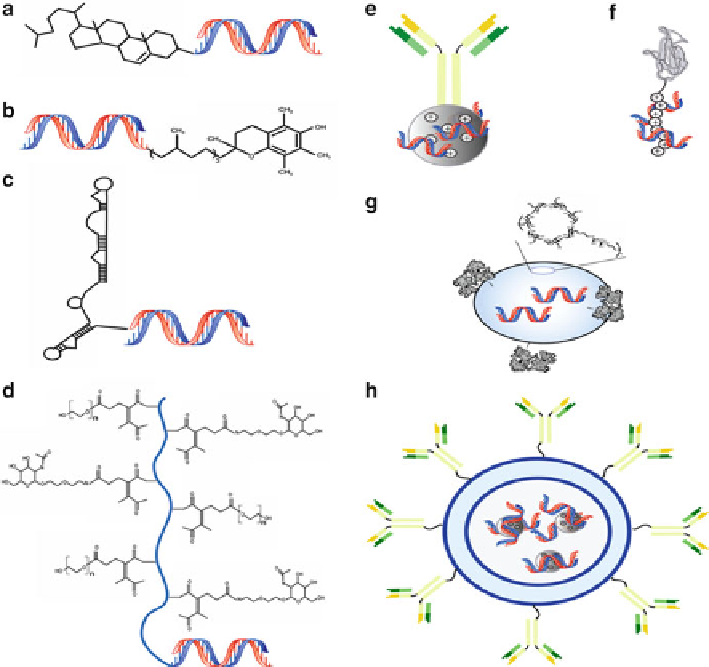Biology Reference
In-Depth Information
Fig. 6.2
Strategies for cell type-specific siRNA delivery in vivo. A variety of approaches have
been used for the cell type-specific delivery of siRNAs, including the direct conjugation of target-
ing molecules, such as ligands [cholesterol (
a
) and a -tocopherol (
b
)], aptamers (
c
) or polymers
[dynamic polyconjugates (
d
)]. In addition, the negatively charged siRNA will spontaneous bind to
positively charged proteins or peptides fused to an antibody (
e
) or a ligand [e.g. a portion of the
rabies virus glycoprotein (RVG) (
f
)]. siRNAs can be encapsulated into polymeric [e.g. cyclodex-
trin (
g
) coated with the ligand transferring] or lipid nanoparticles [e.g. immunoliposomes (
h
), lipid
nanoparticles coated with an antibody]. Reprinted with permission from [
41
] Copyright 2011 Gene
Therapy
understanding of selective biological molecules and the era of “omics” such as
genomics, proteomics and lipidomics [
27,
31
]. Examples for active cellular target-
ing include the cholesterol-siRNA conjugate (Fig.
6.2a
). The speci fi city of this
delivery system is determined by the lipoprotein to which the cholesterol-siRNAs
conjugates are attached in the circulation. When the conjugates bind low-density
lipoproteins (LDL), the particles are mainly taken up by the liver due to its LDL-
receptors' expression, whereas when binding high-density lipoproteins (HDL), they
accumulate in the liver, the gut, the kidney and steroidogenic organs, all of which
express scavenger receptor class B, type I (SR-BI) receptors, which bind HDL [
58
] .

Search WWH ::

Custom Search